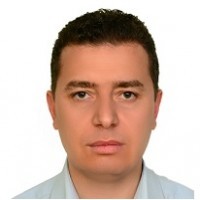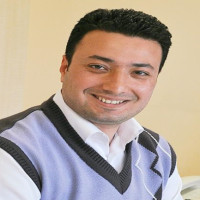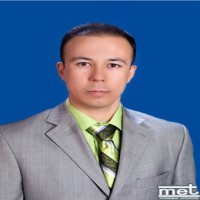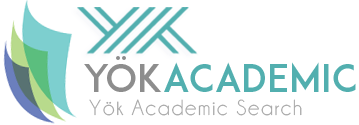Articles
Issue Reviewers

CURRICULUM VITAE
PERSONAL DETAILS
Name-Surname: Ali İhsan KAYA
Place and Date of Birth: Turkey-1970
E-mail: aliihsankaya21@gmail.com
Foreign Language: English
POSITIONS
Head of Department, Burdur Mehmet Akif Ersoy University, Technical Sciences Vocational School Department of Design (2004-…)
EDUCATIONAL STATUS
UNDERGRADUATE
University: Istanbul University
Academic Unit: Faculty of Forest
Program/Department: Forest Industry Engineering
Date of Graduation: 1992
POST-GRADUATE
University: Balıkesir University
Institute: Institute of Social Sciences
Field: Faculty of Management
Title of Thesis: Investigation of Voltage Stability by Analysis of Energy Function
Date of Graduation: 2001
DOCTORATE
University: Süleyman Demirel University
Institute: Institute of Sciences
Field: Forest Engineering
Title of Thesis: A Study of Composite Materials That Produced from Recovered Fibers of Recycled Waste Papers
Date of Graduation: 2015
ACADEMIC TITLES
Lecturer Mehmet Akif Ersoy University 2004-2015
Assistant Professor Mehmet Akif Ersoy University 2015-….
SCIENTIFIC TECHNOLOGICAL ACTIVITY FIELDS
Agricultural Sciences - Forestry - Forest Industry Engineering - Forest Products -Chemistry and Technology - Cellulose production
Technical Sciences - Civil Engineering - Building Material - Insulation Materials Applications
Basic Sciences - Chemistry - Physical Chemistry - Composites
LIST OF PUBLICATIONS
REFEREED JOURNAL PUBLICATIONS
1. Kaya, A. I. (2022). FIRE PERFORMANCE OF THERMALLY MODIFIED WOOD IMPREGNATED WITH CLAY NANOMATERIALS. FRESENIUS ENVIRONMENTAL BULLETIN, 31(5), 5292-5296.
2. Sahin, H. T., Yalcin, O. U., & Kaya, A. I. (2022). A Study on Composite Panels Prepared from Mixture of Mineral Adducts with Calabrian Pine Tree (Pinus brutia) Residues.
3. Kaya, A. I., Cifci, A., KIRDIOĞULLARI, F., Kahriman, M., & Cerezci, O. (2022). Design and manufacture of electromagnetic absorber composed of boric acid-incorporated wastepaper composites. Turkish Journal of Electrical Engineering & Computer Sciences, 30(3).
4. Sahin, H. T., Yalcin, O. U., & Kaya, A. I. (2022). A Study on Composite Panels Prepared from Mixture of Mineral Adducts with Calabrian Pine Tree (Pinus brutia) Residues.
5. Kaya, A. I., Yalcin, O. U., & Sahin, H. T. (2022). Mineral Based Boards Made from Lignocellulosic Wastes. Part 2. Chemical and Technological Properties. Asian Journal of Chemical Sciences, 1-9.
6. Yalçin, O. U., & Kaya, A. İ. (2022). Properties of gypsum particleboard with added mineral dolomite. Maderas-Cienc Tecnol, 24.
7. KAYA, A. İ., YALÇIN, Ö. Ü., & TÜRKER, Y. (2021). Physical, Mechanical and Thermal Properties of Red Pine Wood-Gypsum Particleboard. Bilge International Journal of Science and Technology Research, 5(2), 139-145.
8. Kaya, A. I. (2022). Determination of chemical structure, mechanical properties and combustion resistance of polyurethane doped with boric acid. Journal of Thermoplastic Composite Materials, 35(5), 720-739.
9. Çifci, A., & Kaya, A. İ. (2017). Electromagnetic shielding effectiveness of mineral doped waste paper fiber. Acta Phys Pol A, 134(1), 265-267.
10. Kaya, A. İ., Çifci, A., Gözel, M. A., & Kahriman, M. (2020). Electromagnetic absorption efficiency of aluminum doped composite materials recycled from waste Tetra Pak packages in the frequency range 1.8 GHz to 5 GHz. Materials Research Express, 7(12), 126103.
11. Kaya, A. İ., Çiftçi, A., & İlkuçar, M. (2021). Use of Fourier Transform Infrared Spectroscopy and Artificial Neural Networks to predict the wood density of Cedrus libani A. Rich. FRESENIUS ENVIRONMENTAL BULLETIN
12. Kaya, A. I. (2020). Determination of Thermal Conductivity and Physical Properties of Fe2O3 Doped Rigid Polyurethane Materials. Science of Advanced Materials, 12(12), 1790-1793.
13. Ilkuçar Muhammer, Çıfcı Ahmet, Kaya Alı Ihsan (2018). Ağaç Türlerinin Mekanik Özelliklere Göre Yapay Sinir Ağları ile Tahmini. Gümüşhane Üniversitesi Fen Bilimleri Enstitüsü Dergisi, 8(1),75-83., Doi: 10.17714/gumusfenbil.310585 (Yayın No: 3820301)
14. Kaya Ali Ihsan, Sahin Halil Turgut (2017). The Effects of Boric Acid on Fiberboard Properties Made from Wood/Secondary Fiber Mixtures: Part 4. Insulation Properties of Boards. Journal of Applied Life Sciences International, 15(1), 1-11., Doi: 10.9734/JALSI/2017/37063 (Yayın No: 3716216)
15. Kaya Ali Ihsan, Sahin Halil Turgut (2017). The Effects of Boric Acid on Fiberboard Properties Made from Wood/Secondary Fiber Mixtures: Part 4. Insulation Properties of Boards. Journal of Applied Life Sciences International, 15(1), 1-11., Doi: 10.9734/JALSI/2017/37063 (Yayın No: 3842006)
16. Kaya Ali Ihsan, Sahin Halil Turgut (2016). The Effects of Boric Acid on Fiberboard Properties Made from Wood Secondary Fiber Mixtures Part 1 Utilization of Recycled Newsprint Paper Fibers. American Chemical Science Journal, 16(1), 1-8., Doi: 10.9734/ACSJ/2016/27276 (Yayın No: 2929712)
17. Kaya Ali Ihsan, Sahin Halil Turgut (2016). The Effects of Boric Acid on Fiberboard Made from Wood Secondary Fiber Mixtures Part 2 Utilization of Recycled Old Corrugated Container Fibers. American Chemical Science Journal, 16(2), 1-8., Doi: 10.9734/ACSJ/2016/27757 (Yayın No:
2941009)
18. Kaya Ali Ihsan, Sahin Halil Turgut (2016). The Effects of Boric Acid on Fiberboard Made from Wood Secondary Fiber Mixtures Part 3 Utilization of Recycled Waste Office Paper Fibers. American Chemical Science Journal, 16(3), 1-8., Doi: 10.9734/ACSJ/2016/27758 (Yayın No: 2941057)
19. Kaya Ali Ihsan, Dalgar Tuncer, Uzunay Betül Halime (2017). Görme Engelliler Için Mutfak Tasarimi. Ileri Teknoloji Bilimleri Dergisi, 6(3), 970-983. (Kontrol No: 3742224)
20. Kaya Ali Ihsan, Çifci Ahmet (2017). Iletken Mineral Ve Odun Lifinden Olusan Kompozit Malzemenin Elektromanyetik Ekranlama Performansi. Ileri Teknoloji Bilimleri Dergisi, 6(3), 815-819. (Kontrol No: 3743025)
21. Çifci Ahmet, Kaya Ali Ihsan (2017). Atik Tetra Pak Kullanilarak Elektromanyetik Girisimin Sogurulmasi. Ileri Teknoloji Bilimleri Dergisi, 6(3), 946-956. (Kontrol No: 4112624)
22. Sahin Halil Turgut, Filiz Mümin, Kaya Ali Ihsan, Sütçü Abdullah (2011). Ahsap esaslı malzemelerden formaldehit emisyonu ve etkileri. Laminart(73), 116-119. (Kontrol No: 1664627)
23. Kaya Ali Ihsan, Dalgar Tuncer (2017). Ses Yalıtımı Açısından Dogal Liflerin Akustik Özellikleri. MESTEK 2017: 4. Ulusal Meslek Yüksekokulları Sosyal ve Teknik Bilimler Kongresi (Tam Metin Bildiri/Sözlü Sunum)(Yayın No:3541509)
24. Kaya Ali Ihsan (1997). Mobilya Endüstrisinde Üretim Planlaması. Cumhuriyetin75.yılında Ormancılıgımız Sempozyumu, 621-638. (Tam Metin Bildiri/Sözlü Sunum)(Yayın No:387210)
25. Dalgar Tuncer,Kaya Ali Ihsan (2017). Oyuncak Tercihinde Ahsap Malzeme Özelliklerinin Incelenmesi. Ileri Teknoloji Bilimleri Dergisi, 6(3), 6-19. (Ulusal) (Hakemli) (MAKALE Derleme Makale) (Yayın No: 3742025)
26. Kaya Ali Ihsan, Dalgar Tuncer (2017). Ses Yalıtımı Açısından Dogal Liflerin Akustik Özellikleri. MAKÜ FEBED, 25-37. (Ulusal) (Hakemli) (MAKALE Derleme Makale) (Yayın No: 3541498)
27. Kaya Ali Ihsan (2016). Kompozit Malzemeler ve Özellikleri. Poliüretan ve kompozit Sanayi
Dergisi, 8(29), 38-44. (Ulusal) (Hakemli) (MAKALE Derleme Makale) (Yayın No: 2941066)
28. Derleme Makale, Dalgar Tuncer,Kaya Ali Ihsan (2017). Oyuncak Tercihinde Ahsap Malzeme Özelliklerinin Incelenmesi. Ileri Teknoloji Bilimleri Dergisi, 6(3), 6-19. (Yayın No: 3742025)
29. Derleme Makale, Kaya Ali Ihsan,Dalgar Tuncer (2017). Ses Yalıtımı Açısından Dogal Liflerin Akustik Özellikleri. MAKÜ FEBED, 25-37. (Yayın No: 3541498)
30. Derleme Makale, Kaya Ali Ihsan (2016). Kompozit Malzemeler ve Özellikleri. Poliüretan ve
kompozit Sanayi Dergisi, 8(29), 38-44. (Yayın No: 2941066)
REFEREED CONFERENCE PROCEEDINGS
1.Çifci Ahmet, Kaya Ali Ihsan (2017). Atık Tetra Pak Kullanılarak Elektromanyetik Girisimin
Sogurulması. 4.Uluslararası Mobilya ve Dekorasyon Kongresi (Tam Metin Bildiri/Poster)(Yayın
No:3746029)
2.Kaya Ali Ihsan,Çifci Ahmet (2017). Iletken Mineral Ve Odun Lifinden Olusan Kompozit Malzemenin Elektromanyetik Ekranlama Performansı.Uluslararası mobilya ve Dekorasyon K0ngresi, 6(3), 815-819. (Tam Metin Bildiri/Poster)(Yayın No:3742981)
3.Dalgar Tuncer, Kaya Ali Ihsan (2017). Oyuncak Tercihinde Ahsap Malzeme Özelliklerinin Incelenmesi. Uluslararası Mobilya ve Dekorasyon Kongresi, 6(3), 9-16. (Tam Metin Bildiri/Sözlü Sunum)(Yayın No:3741930)
4.Kaya Ali Ihsan,Dalgar Tuncer,Uzunay Betül Halime (2017). Görme Engelliler Için Mutfak Tasarimi. 4.Uluslararası Mobilya ve Dekorasyon Kongresi, 6(3), 970-983. (Tam Metin
Bildiri/Sözlü Sunum)(Yayın No:3742125)
5.Kaya Ali Ihsan, Sahin Halil Turgut,Yalçin Ömer Ümit (2017). Acoustic Properties Of Boards
Made From Mixtures Of Wood And Recycled Waste Paper Fibers. Isfor 2017, International
Symposium On New Horizons In Forestry, 1(1), 272-272. (Özet Bildiri/Sözlü Sunum)(Yayın
No:3915329)
6.Kaya Ali Ihsan, Çifci Ahmet (2017). Kaplama Yöntemi ile Ahsap Kompozit Malzemelerin Elektromanyetik Kalkanlama Özellikleri. VI.Uluslararası Meslek Yüksekokulları Kongresi (Tam Metin Bildiri/Poster)(Yayın No:3696770)
8.Çifci Ahmet, Kaya Ali Ihsan (2017). Electromagnetic Shielding Effectiveness of Mineral Doped
Waste Paper Fiber. APMAS 20177th International Advances in Applied Physics and Materials Science Congress Exhibition, 12-18. (Tam Metin Bildiri/Poster)(Yayın No:3696787)
9.Ilkuçar Muhammer, Çifci Ahmet,Kaya Ali Ihsan (2017). Optimization Unbalanced Vehicle Route Problemusing Population Based Optimization Algorithms:Shortest Path Of A Piece Of Real City Model Supportedby Google Map. 4th International Conference, Dubai, UAE,, 1(1) (Özet Bildiri/Sözlü Sunum)(Yayın No:3696401)
ACADEMIC HONORS AND AWARDS
Certificate of Merit for the 2011 International Conference of Electrical and Electronics Engineering, The World Congress on Engineering, 2011.
Support Program for Participation in Scientific Activities Abroad, TÜBİTAK (The Scientific and Technological Research Council of Turkey), 2013.
PROFESSIONAL MEMBERSHIPS
The Chamber of Forest Engineers





Aim & Scope
The Afyon Kocatepe University International Journal of Engineering Technologies and Applied Sciences aims to convey the latest scientific / technical developments in basic and engineering sciences to relevant scientists and readers. The journal deals with both experimental and theoretical studies of basic sciences and engineering.
The Afyon Kocatepe University International Journal of Engineering Technologies and Applied Sciences (AKU-IJETAS) (e-ISSN: 2667-4165) is a multidisciplinary journal covering all aspects of engineering. The Journal of International Engineering and Applied Sciences aims to convey the latest scientific / technical developments in basic and engineering sciences to relevant scientists and readers. The journal deals with both experimental and theoretical studies of basic sciences and engineering.
Author Guidelines
Writing rules
Afyon Kocatepe University International Journal of Engineering Technologies and Applied Sciences is a journal that contains important, original and high quality research and studies in the fields of Science and Engineering. The manuscripts of the articles to be published in the journal are given below. All articles are evaluated by the scientific committee in terms of their scientific contributions, originalities and contents. Authors are responsible for the accuracy of their data. The journal reserves the right to make appropriate corrections regarding language and spelling where it deems necessary. Articles may be returned to the responsible author for revision if deemed necessary. The articles published in the journal become the property of the journal and the copyright of the articles is taken in the name of hakk Afyon Kocatepe University International Engineering and Applied Sciences D. Manuscripts printed in any language are not evaluated for publication in the journal. Authors cannot send an article to the Journal of International Engineering and Applied Sciences of Afyon Kocatepe University to another journal. Authorization of the author and the printing house is taken in all the changes made in the articles.
Authors are required to submit an (overwrite zorund and formu copyright transfer form ı together with the article (e-manuscript) through the online system (The copyright transfer form can also be submitted after the article has been accepted). The manuscript sent with the article should indicate whether any part of the information in the article has been previously published in electronic media or sent for evaluation. The author should have an address, telephone, fax number and e-mail address.
You can reach this sample, which has been prepared for the articles to be submitted to Afyon Kocatepe University International Journal of Engineering and Applied Sciences, in the Bilim Sample article ve on the magazine's web page. Please prepare your article presentation in MS-Word® format.
Articles submitted will be reviewed and evaluated by the related field editors and the publication owner will be informed about the status of the article. NOTE: USE THE SAMPLE PAPER BELOW THE PRINTING OF DOCUMENTS. ... The spelling language is Turkish or English.
-Seconds; (Right-Left-Bottom-Top) should be 2 cm.
-General Measures; The width of the milk should be 8,15 cm, the spacing should be 0,7 cm.
-Title; 16 Punto, Calibri font, Left Align and Initial Letters must be Large (and, except with, etc.)
-Key words; maximum 6, 9 pt, Calibri font and centered. The initial letters of the keywords must be large and separated by büyük; harfl.
-Summary; It should not exceed 250 words in Turkish and English, and no paragraphs should be used. Abstract should be 9 points, Calibri font and two side aligned.
-Text; The text of the text, which should be written in Calibri, should be formatted as 11-point, Range 0 cm, Multiple (1.15 cm) line spacing and two-sided aligned. The margins for each page should be 2 cm in all directions. Findings and Discussion can be given together if necessary. In this case, the result should be given under a separate title. Text can contain numbered subheadings as needed. Each subheading should be listed under the main heading. For example; 2.1., 2.2., 2.3. etc.
Molds; Figures; It should be in JPEG or TIFF format and should not be presented as an Excel extension. Shape text should be 10 pt. Figures should be embedded in the manuscript and submitted as a separate file during the article submission. Figures should be presented in black and white or grayscale. The width of the figures should not exceed 8 cm for two columns and 17 cm for one column.
-Table; their names should be at the top of the table, should be written with Calibri font and 10 font size. See the example (grid) article for the table example.
-Resources; (Indentation: Special Hanging 0.5 cm) should be given in the form of a child's surname and year in round brackets. (Please see example (manual) for details). The references directory should be given as follows. Author's surname, initials, year of publication. Title of article. Long name of the journal (italics), volume number (if any), page range. Author's last name, initial letter (s) of his / her name, year. The name of the book. skin number, editor (s), publisher, page range. Author's surname, first letter of his / her name, year of thesis. Name of thesis, type of thesis (Master's degree, PhD), institute where the thesis is submitted, place of presentation, total page.
Ethical Principles and Publication Policy
ETHICAL PRINCIPLES
Publication Principles
All publications are subject to a double-blind peer review process based on initial screening by editorial criteria, and the Committee on Publication Ethics (COPE) review principles include significant contribution to the field, conceptual quality, appropriate methodology, and clarity of expression. Publication of an article in a “double-blind, peer-reviewed” journal is essential to the development of a coherent and respected body of knowledge. In double-blind peer review, articles written by ‘prestigious’ or renowned authors are evaluated based on the content of their articles rather than the reputation of the author. Therefore, it is important to agree on the expected standards of ethical conduct for all parties involved in publishing: authors, journal editor, reviewers, and publisher. Authors must ensure that they have written completely original work and that if they have used the work and/or words of others, this is properly cited or referred to.
About the Committee on Publication Ethics (COPE, https://publicationethics.org/)
COPE advises editors and publishers on all aspects of publication ethics, and in particular how to deal with cases of research and publication misconduct. It also provides its members with a forum to discuss individual cases. COPE does not investigate individual cases; it encourages editors to ensure that cases are investigated by the appropriate authorities (usually a research institution or employer). All COPE members are expected to apply the COPE publication ethics principles set out in the core practices.
The Ethics Committee requests ethics committee approval from authors within the scope of AKU-IJETAS’s TR Dizin criteria.
Editors’ Responsibilities
• Impartiality
• Confidentiality
• Process control
• Publication Decision
Reviewers’ Responsibilities
• Speed
• Confidentiality
• Process Planning
• Objectivity Standards
• Source Certification
• Contribution to Editor’s Decision
• Contribution to Work Quality
Authors’ Responsibilities
• Originality
• Data Access and Storage
• Source Certification
• Article Authorship
• Multiple, Redundant or Simultaneous Publication
• Avoidance of Environmentally Harmful Practices
• Indication of Funds Used
• Copyright Agreement
• Spelling Check
PUBLICATION POLICY
Publication fee
AKU-IJETAS does not request any publication fee.
Open Access
ETHICAL PRINCIPLES
Publication Principles
All publications are subject to a double-blind peer review process based on initial screening by editorial criteria, and the Committee on Publication Ethics (COPE) review principles include significant contribution to the field, conceptual quality, appropriate methodology, and clarity of expression. Publication of an article in a “double-blind, peer-reviewed” journal is essential to the development of a coherent and respected body of knowledge. In double-blind peer review, articles written by ‘prestigious’ or renowned authors are evaluated based on the content of their articles rather than the reputation of the author. Therefore, it is important to agree on the expected standards of ethical conduct for all parties involved in publishing: authors, journal editor, reviewers, and publisher. Authors must ensure that they have written completely original work and that if authors have used the work and/or words of others, this is appropriately cited or referred to.
About the Committee on Publication Ethics (COPE, https://publicationethics.org/)
COPE advises editors and publishers on all aspects of publication ethics, and in particular how to deal with cases of misconduct in research and publication. It also provides its members with a forum to discuss individual cases. COPE does not investigate individual cases; it encourages editors to ensure that cases are investigated by the appropriate authorities (usually a research institution or employer). All COPE members are expected to apply the COPE publication ethics principles set out in the core practices.
The Ethics Committee requests ethics committee approval from authors under the AKU-IJATAS TR Index criteria.
Plagiarism Policy
Every work sent to AKU-IJETAS is first examined in a similarity program (such as Turnitin, iThenticate or İntihal.Net). In order to be evaluated, it is analyzed on a word-by-word basis, excluding the references. As a result of the analysis, the total similarity rate should be a maximum of 20%, and the similarity rate to an individual study should be a maximum of 5%.
Blind Refereeing Process
AKU -IJETAS: A is a refereed academic journal that publishes scientific articles that have been subject to a double-blind refereeing process twice a year.
At least two referees are appointed by the editor(s) for the review of publications, depending on the content of the studies and the referees' areas of expertise. All referee evaluation reports are sent anonymously in electronic media. The names of the referees who make the evaluations are not stated in the reports or the journal due to the double-blind method. However, a referee thank-you note is sent to the referees after their evaluations.
Blind refereeing processes directly affect the quality of academic publications. The evaluation process is carried out with the principle of double-blind refereeing. Referees cannot directly communicate with the authors, and evaluation and referee reports are sent through the Mail management system. During this process, evaluation forms and referee reports are sent to the author(s) through the editor. Double-blind refereeing helps editors make decisions in dialogue with the authors. At the same time, authors have the opportunity to develop their work by obtaining important information about their work.
Decision-Making Process
Editors and the publisher send all studies submitted for publication to at least two referees who are experts in their fields for evaluation. In case of disagreement between the referees, a third referee is appointed and the article is decided according to the majority decision. The evaluation forms filled out by the referees and their corrections on the text, if they prefer, are contacted by the responsible author and sent to the authors. The final corrected file from the author is re-evaluated by the referees and the field editor, and a decision is made as to whether the study will be published or not.
Confidentiality
Studies sent to the referees for evaluation should be considered as confidential documents. Studies should not be shown to others, and their content should not be discussed. If necessary, referees may seek advice from other colleagues with the permission of the Editor-in-Chief. The Editor-in-Chief may grant this permission only under exceptional circumstances. The confidentiality rule also covers those who refuse to serve as referees.
Principle of Impartiality
Authors should not be subject to personal criticism during the evaluation process. Evaluations should be made in a way that is objective and contributes to the development of the studies.
Citation
Referees are responsible for informing the authors of any citations that are not cited in the study. Referees should pay particular attention to works that are not cited in the field or to citations that conflict with similar works. Referees should inform the editors if they notice any publications that are similar to any previously published work or information.
Disclosure and Conflicts of Interest
Referees should not accept to evaluate any work or section of a work sent for evaluation if they have any collaborative connection with any author, company or institution whose work they are assigned to evaluate, and they should inform the editors of the situation.
Referees cannot use unpublished works or parts of works sent for evaluation in their own studies without the written consent of the author(s). Information and ideas obtained during the evaluation should be kept confidential by the referees and should not be used for their own interests. These rules also apply to those who do not accept the duty of being a referee.
Language of Publication
AKU-IJETAS accepts research articles written in Turkish and English for review.
Publication Frequency
AKU -IJETAS, which has been publishing issues since 2018, has published one volume every year since 2020 and each volume consists of 2 issues (June, December)
Open Access Policy
AKU -IJETAS: A journal; Adopting the principle that providing scientific studies to the public free of charge and increasing the global sharing of knowledge, provides immediate open access to its content.
AKU -IJETAS A journal does not charge any fees for all articles accepted and published as a result of peer review. It complies with the principles stated by the Budapest Open - Access Initiative (BOAI) regarding Open Access. Articles in the journal can be used as long as the author and original source are cited. Permission from the author and publishers is not required.
Price Policy
All expenses of the journal are covered by Afyon Kocatepe University.
No fee is charged for publishing the article and conducting the article processes in the journal.
No processing fee or publication fee is charged for articles submitted to the journal or accepted for publication.





